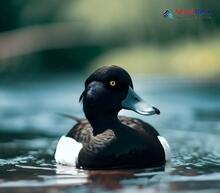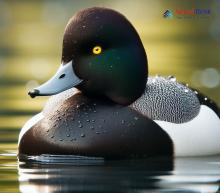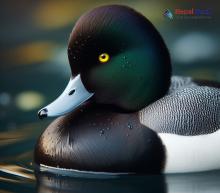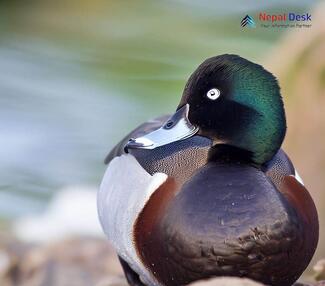Nepal, renowned for its stunning natural landscapes and rich cultural history, is also a haven for diverse and alluring bird species. Among these is the captivating Aythyinae subfamily, primarily made up of diving ducks. Here, we will delve into the features and behaviors of these fascinating birds and explore how they have adapted to life within Nepal's varied ecosystems.
Exploring the World of Aythyinae Ducks
The larger Anatidae family encompasses the Aythyinae subfamily, which shares its category with swans, geese, and ducks. Renowned for their impressive diving abilities and exceptional underwater agility, these ducks are adept at hunting aquatic prey like fish, crustaceans, and mollusks. Their proficient diving skills allow them to access food sources typically unreachable by other waterfowl species.
Physical Attributes
Aythyinae birds tend to have compact bodies with sizeable heads and short necks. They also have sturdy legs situated towards the back of their bodies, granting them extraordinary propulsion while diving. The striking plumage colors displayed by some species function as both camouflage and essential identifiers during mating rituals.
Nepalese Habitats
Nepal's varied landscape serves as an idyllic setting for water-loving birds such as the Aythyinae ducks. These creatures can be found in wetlands all over the country—like marshes, lakes, rivers, and even high-altitude glacial ponds. Owing to Nepal's numerous protected areas and conservation initiatives, members of this exotic subfamily continue to thrive in their natural habitats.
Adaptations
Several unique adaptations have allowed Aythyinae ducks to thrive in aquatic ecosystems. Besides their notable diving skills, their specialized beak structures facilitate the efficient capture and consumption of prey. Their waterproof feathers help them stay buoyant while leg positioning assists in rapid underwater movement.
Conservation Initiatives
Preserving biodiversity is essential for ensuring the vitality of any ecosystem. As these birds inhabit distinctive environments, they are often regarded as critical indicators of wetland health. Conservation endeavors focused on preserving clean freshwater habitats, promoting eco-tourism, and establishing habitat reserves all contribute to securing the continued existence of these extraordinary creatures in Nepal.
To sum up, the Aythyinae subfamily is an enthralling group of birds inhabiting Nepal's wetlands and waterways. With their remarkable diving skills, eye-catching appearances, and fascinating behaviors, they offer a remarkable glimpse into the nation's abundant birdlife. By supporting conservation efforts and appreciating the beauty they bring to our natural world, we can ensure that future generations can enjoy these incredible birds as well.





